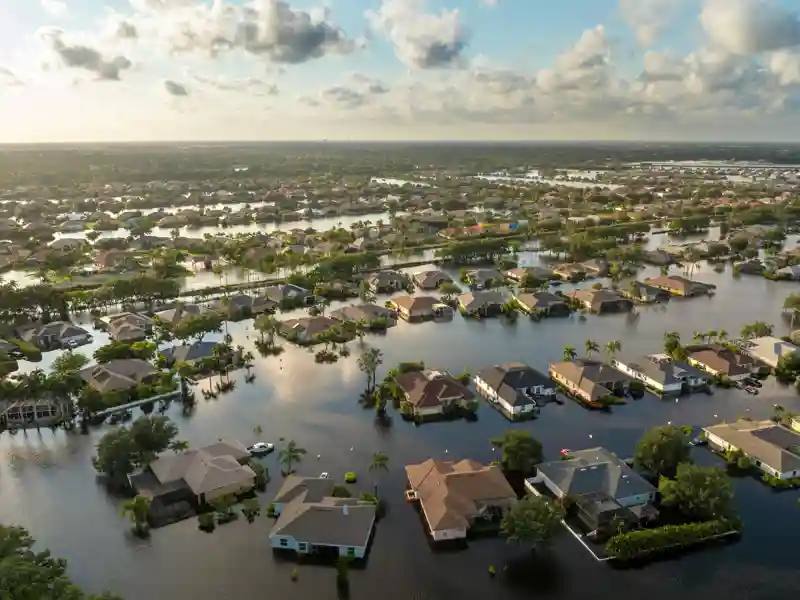
Extreme weather events are changing how the industry approaches risk. Hurricanes, hailstorms, deep freezes and flash floods are occurring more often, impacting project schedules, budgets and insurance programs across North America.
This shift makes it critical for firms to reconsider how they plan for and respond to disruption. The increase in natural disasters in construction projects is prompting contractors, developers and insurers to move beyond traditional risk strategies.
Re-evaluating Traditional Coverage Models
Many firms still use conventional methods of risk transfer — these approaches often fall short in regions now facing more severe weather patterns. Natural disaster insurance coverage is evolving as insurers apply new deductibles or reduce limits based on updated climate data.
Regions once viewed as low-risk are now being reassessed. As natural disaster coverage becomes more expensive or more limited, contractors must account for these changes early in the project lifecycle. This impacts bid pricing, cash flow forecasting and long-term risk planning.
Technology as a Risk Control Tool
Technology is playing a larger role in how teams manage natural disaster risk. Smart systems and predictive tools are helping teams anticipate exposure and respond quickly when conditions change.
Examples of effective tools include:
- Weather platforms that allow teams to shift schedules before a storm.
- Water detection systems that identify leaks before they escalate.
- Environmental sensors that track real-time changes on-site.
- Construction software that integrates forecast data into daily operations.
These systems are especially valuable during active builds. They help teams reduce exposure to weather-related losses and improve overall project reliability when facing natural disasters in construction projects.
Exploring Alternative Insurance Options
As severe weather increases, builders need faster, more predictable coverage. One option is parametric insurance, which pays out when conditions like wind speed or rainfall hit a set threshold. For example:
- A contractor receives a $250,000 payout after wind speeds over 85 mph are recorded at the jobsite by an approved weather data provider.
- A project in a flood-prone zone gets a pre-agreed payment when rainfall exceeds 5 inches within 24 hours, helping offset site damage and equipment delays.
- A construction firm in the Southwest triggers coverage during an extreme heat event when temperatures stay above 110°F for 3 consecutive days, allowing them to fund workforce safety and adjust schedules.
Parametric insurance, once niche, is now a key part of natural disaster insurance coverage, offering contractors a faster, data-driven way to recover from natural disasters in construction projects.
Designing for Resilience
Construction methods and schedules are also evolving. In areas prone to fire, wind or flooding, developers are turning to more durable materials such as concrete and cross-laminated timber. Municipalities are adopting stricter codes that restrict materials known to perform poorly under stress.
Contractors are building flexibility into their timelines. Some projects now include additional weather days or rely on scheduling tools that align work with seasonal weather patterns. These measures help teams avoid high-risk windows and reduce downtime.
Four key strategies for climate-resilient construction include:
- Using materials that resist water, fire and high winds.
- Including weather contingency days in project timelines.
- Leveraging scheduling tools that account for regional weather trends.
- Monitoring code changes in high-risk areas and adjusting plans accordingly.
The Environmental Factor
The construction industry’s environmental impact is under greater scrutiny. As weather events intensify, there is more focus on how projects contribute to emissions, resource use and site durability. Investors, regulators and insurers are all pushing for better long-term performance.
By addressing environmental exposure as part of overall risk management, firms not only improve compliance but may also benefit from better underwriting results. Sustainable practices are no longer just regulatory requirements — they influence project costs, insurability and reputation.
How NFP Helps
NFP helps contractors, developers and owners strengthen risk strategies in the face of climate volatility. Our Construction and Infrastructure team aligns insurance programs, operational planning and risk controls to reduce exposure and protect continuity.
We advise on policy structures, including parametric options, and support the integration of technology, contract terms and insurance language that address today’s natural disaster risks. As the industry focuses on resilience, environmental impact and compliance, NFP delivers insight to help manage cost, coverage and complexity with confidence.






